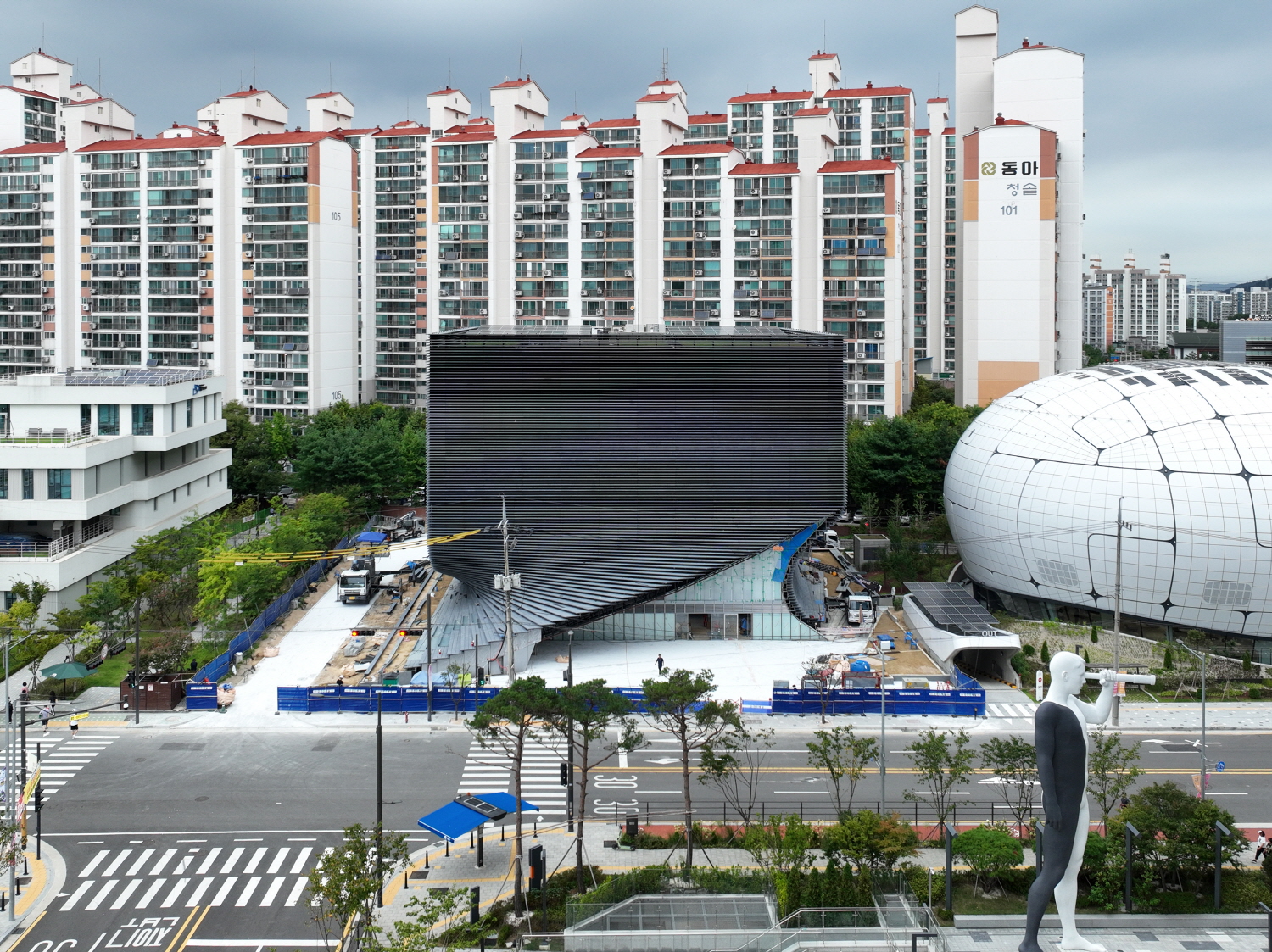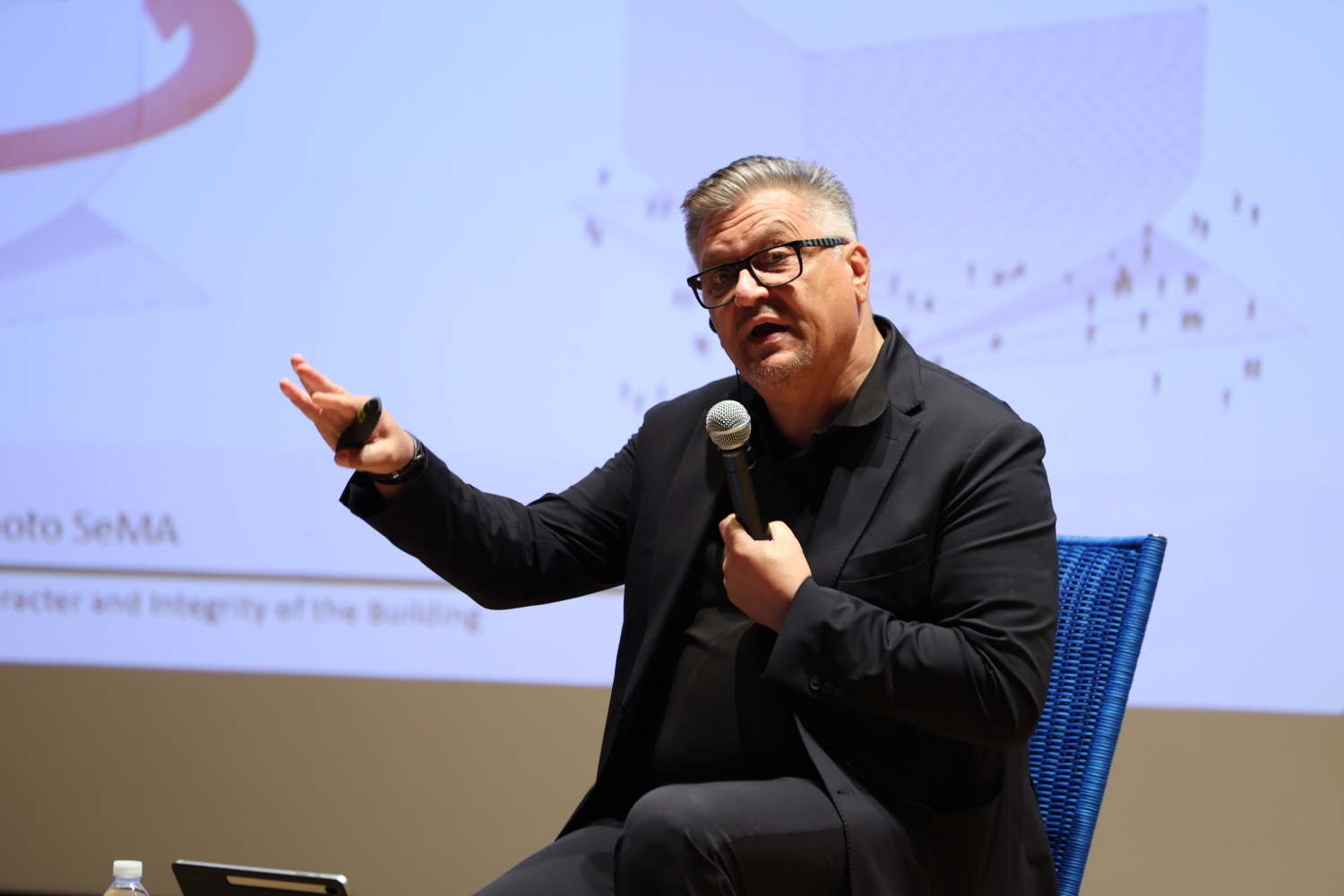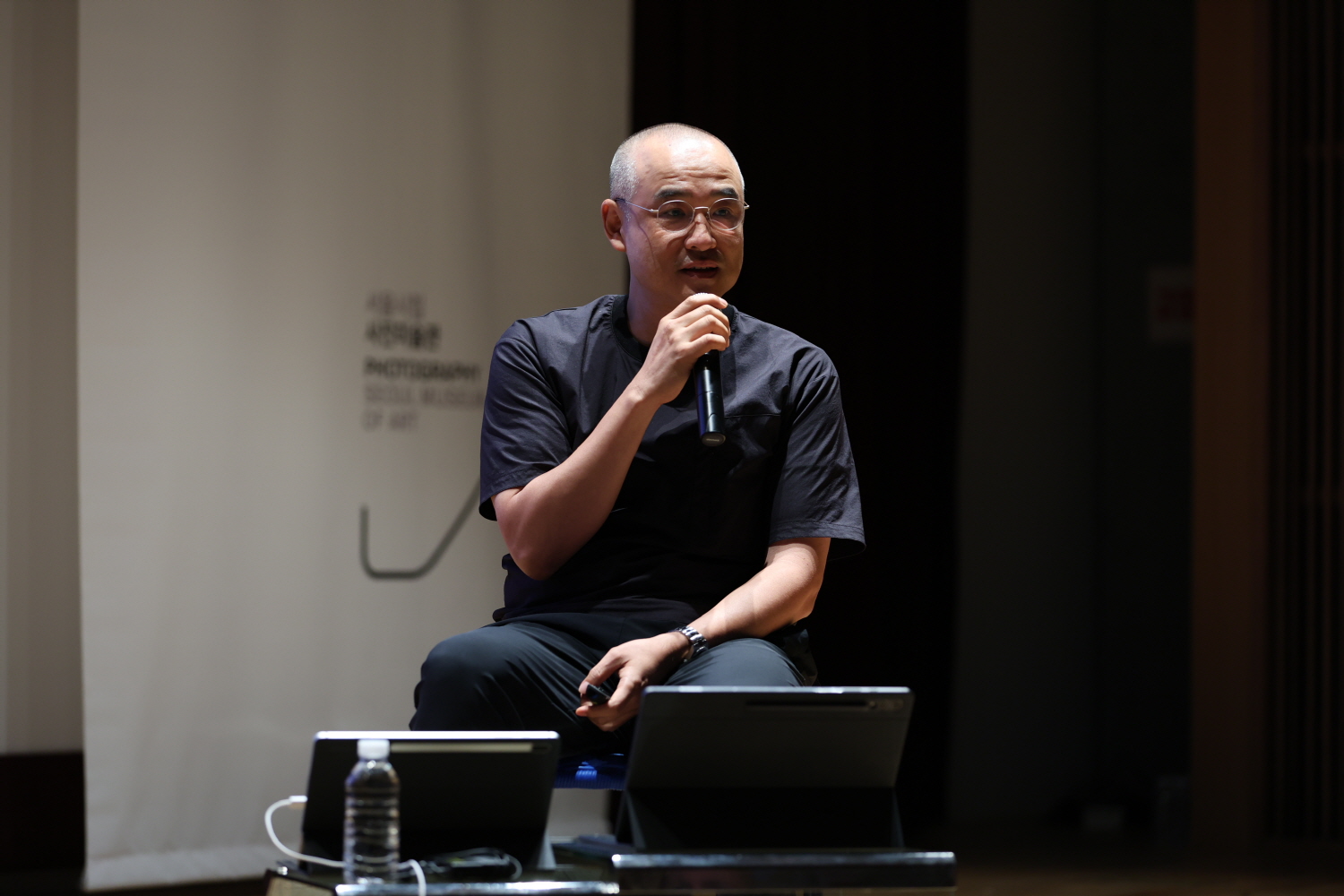SPACE October 2024 (No. 683)

Exterior view of Photo SeMA ©Jung Jihyun

Mladen Jadric / Image courtesy of Photo SeMA / ©GENIEPROJECT

Yoon Geunju / Image courtesy of Photo SeMA / ©GENIEPROJECT
On Sep. 3, the Seoul Museum of Art (SeMA) hosted an international seminar entitled ‘A Place for Photography’ to celebrate the opening of Photo SeMA. Located in Dobong-gu, Seoul, Photo SeMA is the first public art museum of photography in Korea, and it is scheduled to be completed by the end of Sep. and to open next spring. The building has a total floor area of 7,000m2, and it consists of four ground floors and two basement levels. Han Junghee (director, Photo SeMA), who oversees the operations of Photo SeMA, began the seminar—which began acknowledging that there was no ‘institution that could define the 140-year history of Korean photography by introducing the process of building a collection of 20,000 works by 2,060 artists, followed by presentations from the heads of overseas photography research institutions. Péter Baki (director, Hungarian Museum of Photography) focused on Hungary’s photographic heritage. From György Klösz to László Moholy-Nagy and to Martin Munkácsi, Hungary has produced many of the masters of modern photography, and the Hungarian Museum of Photography has a collection of 700,000 works. But the situation is different in terms of facilities rather than content. In an interview with SPACE, Baki heralded Photo SeMA as the building that can ‘take the perfect account of the needs of photographic artifacts’. In the case of the Hungarian Museum of Photography, a repurposed 19th century building has the limitation of completely blocking out natural light. Felix Hoffmann (principal, Foto Arsenal Wien) from Austria displayed a similar reaction. He began by saying that ‘even though photography is created by light, daylight is poison for the objects,’ and stressed that Photo SeMA would be a new building rarely seen on the international photography scene, especially in Europe.
He rated particularly highly the skillful combination of the white cube and the black box, as well as the coherent embodiment of the conceptual basis of Photo SeMA. The presentation by Mladen Jadric (principal, Jadric Architektur ZT GmbH) and Yoon Geunju (co-principal, 1990 urban architecture office), who designed Photo SeMA, focused less on its architectural features than on its cultural context, the value of collaboration, and the hard work that went into its design and construction. Jadric hinted at the project’s strong humanist foundation by listing a number of figures who inspired him, from Swiss philosopher Max Picard to Italian architect Lina Bo Bardi, and mentioned Hannes Meyer (2nd principal, Bauhaus), who highlighted the value of collaboration and argued that the era of ‘starchitects’ was over and that the era of ‘collective design’ had returned. In an interview with SPACE prior to the seminar, Yoon explained that the relationship between him and Jadric was very different from that between ‘a local office in charge of the construction document phase’ and ‘a foreign office that won the design competition’. In other words, Photo SeMA is the result of an ‘architectural alliance’ in which foreign and Korean architects collaborated on an equal footing. Inspired by the mechanism of a camera aperture, the design by Yoon and Jadric is characterised by the fact that the building’s walls and floors do not meet vertically but curve upwards. To achieve this, they had to overcome a number of challenges, from the shape of the formwork to the way the reinforcement was placed, and to the way the horizontal concrete louvres and irregularly-shaped louvres were attached.





